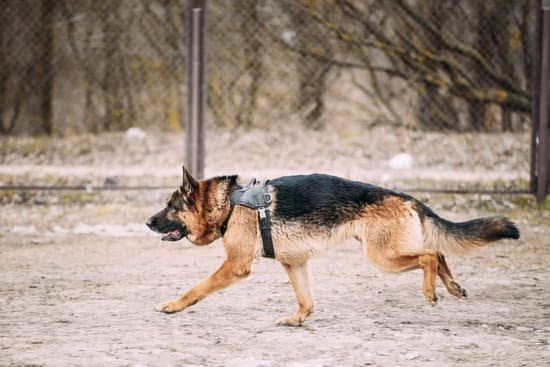Introduction
If you love animals and are looking for a job that is both rewarding and enjoyable, then consider becoming a dog groomer. Trainers in this field are responsible for keeping their canine clients clean, healthy and well-groomed; they also work closely with pet parents to ensure their pup’s safety. Not only do dog groomers gain valuable experiences in the furry companion world, but they can also enjoy many other benefits of this career.
One such benefit of becoming a professional dog groomer is the tremendous opportunity to work with animals on an intimate level. You provide a valuable service that not only helps keep pets looking their best, but also has meaningful effects on their overall health. As their fur grows thick and matted over time, it becomes painful for them and can cause skin problems if not taken care of properly. By providing regular grooming services, dog groomers can directly help make sure that these animals feel good about themselves and remain healthy for years to come.
Another great perk of working as a professional dog groomer is financial stability. Much like any other career path, you will have greater control of where your paychecks come from – be it from private businesses or government agencies – since jobs opportunities in the animal health industry are abundant and growing each year! Furthermore, depending on your geographical location and experience level your wages could range anywhere from minimum wage to six figure salaries. Lastly, those who specialize in mobile pet grooming often reap higher rewards due to the flexibility offered by not needing to commute to fixed locations like salons or kennels.
Theory and Experiential Learning
Becoming a dog groomer requires knowledge and experience to ensure the furkids in your care stay safe and look their best. To become certified, there are a few options available to you:
Online Schools and Online Courses – There are many online schools these days that offer specialized courses specifically geared towards becoming a canine groomer. These courses often provide a comprehensive overview of everything pet grooming professionals need to know like breed-specific styles, general styling techniques, equipment maintenance and more.
On-The-Job Training – Groomers can also gain valuable experience by working with experienced professionals as an apprentice or intern. This type of program allows individuals new to the field to learn from more experienced experts while developing essential grooming skills hand-on. Additionally, apprenticeships usually include classroom instruction on topics ranging from anatomy to proper handling and sanitation practices.
Classroom Instruction – Lastly, for those looking for a more formal approach to learning the trade, traditional canine grooming courses are also available at college programs, technical colleges, career schools and even adult education centers. These courses offer beginners an introduction into all the basics such as selecting proper tools and supplies, understanding breed standards and much more.
Choosing a Program
Once you have decided to pursue a career as a dog groomer, the next step is to select the right program. It’s important that you find a program suited to your skill level, interests and learning style.
When evaluating programs, consider the following factors. First, examine how long the program has been in operation and its accreditations. Since grooming is not regulated in many countries, look for courses backed by reputable organizations such as the National Dog Groomers Association of America or Pet Industry Joint Advisory Council (PIJAC). Ensure that curriculum covers all facets of basic grooming; most programs offer instruction on bathing, drying and brushing fur as well as dental care and nail trimming. Additionally review what equipment will be used during hands-on training with an instructor so you can get accustomed to working with industrial-grade supplies.
Also research whether the program requires externship hours at a professional dog grooming facility, this will give you actual working experience with real clients before entering the field. Be sure to ask instructors about their background; reliable trainers should have prior experience in dog grooming or veterinary medicine. Finally enquire what type of follow-up support is available after you obtain certification. The best programs provide students access to mentors who are knowledgeable professionals in the industry and can provide advice on job opportunities upon graduation.
On-the-Job Training
On-the-Job training is an excellent option for those considering becoming a dog groomer, as it has many advantages. It allows for one to be taught directly by experienced groomers who have hands-on knowledge. Groomers can learn in the environment of their clients’ salon, thereby getting direct experience with high-level customer service, marketing and operational techniques. This form of learning also allows for the establishment of professional relationships with customers and neighboring businesses.
Furthermore, on-the-job training typically offers aspiring dog groomers the opportunity to try out different grooming techniques and utilize new products in a real world setting. This provides valuable insight into each product’s quality and efficacy that would not be available through educational sources alone. It also helps inexperienced groomers learn how to stay safe while working with pets, as they can receive closer mentoring during many hands-on exampless under the guidance of trainers or senior staff members who have more expertise. The benefit of experience further assists when mastering complex skills such as wet bathing, fur trimming and handling large pets safely. As job requirements change over time due to economic issues or client trends, there is great value in being able to adapt quickly to changing situations which on-the-job training enables.
Certification Paths
The path to becoming a certified dog groomer varies depending on where you live and the certifying organization and program you choose to pursue. In the United States, there are two primary routes that people typically take. The first is to enroll with an accredited, in-person education institution providing grooming instruction. These institutions typically offer certificates, two-year associate degrees or four-year bachelor’s degrees in canine cosmetology or animal grooming. They often include classes such as breed specific clipping techniques, skin and coat care, health safety, business management and animal behavior. Students also get opportunities to apply their skills through practicum experiences either at a facility attached to the school or with local grooms who have agreed to mentor them.
The second route is to become credentialed by taking a professional certification exam administered by organizations such as National Dog Groomers Association of America (NDGAA), International Professional Groomers Inc. (IPG) or another nationally recognized group. In order to qualify for this exam, candidates must have experience working as a certified groomer for six months or more within the past three years under the guidance of an experienced instructor with certain qualifications; however exceptions may be made based on individual educational merits or if the candidate has taken advanced courses outside of professional grooming. Generally, it takes candidates up to one year to prepare for the exam so they can demonstrate knowledge in areas like anatomy and physiology, sanitary protocols and proper tools used during dog grooming along with mastery of standard cuts common among several breeds including poodles, terriers and golden retrievers.
Expert Q&A
There are several different places you can look for training to become a dog groomer. Depending on your budget and needs, each option can be beneficial in its own way. If you have the time and resources to commit to a grooming school, that offers the most thorough training and can give you the most comprehensive certification program to ensure your success as a professional dog groomer. Look for one that takes into account safety standards, latest trends, and use of proper grooming tools.
You could also consider taking classes online or attending local workshops where experienced professionals come together to discuss techniques and best practices related to dog grooming. This is great opportunity to learn from experts in the field and network with other aspiring groomers or owners. Additionally, there may be apprenticeship programs offered in your area which pair prospective groomers with experienced dogs owners who can provide valuable hands-on experience in exchange for learning how to properly care for their pet. This approach definitely has its benefits as it gives you an opportunity learn various skills while working directly with animals. Finally, checking out YouTube videos by professional doggroomers or joining Facebook groups or forums dedicated to the topic of Dog Grooming is another excellent way for beginners to gain insights on topics pertaining to this profession such as grooming breeds, specific cuts, coat care basics, etc.
Conclusion
To recap, there are several ways to train to be a dog groomer. You can take an online course, attend grooming-specific seminars held by professional associations, or enroll in classes offered at an institution that specializes in dog grooming education. You may also choose to shadow a professional groomer and gain hands-on experience. No matter which option you choose, it is important to ascertain that the program is approved by the National Dog Groomers Association of America (NDGAA). Once your training is complete and you have obtained certification from the NDGAA, it will be time to start your career as a professional dog groomer!

Welcome to the blog! I am a professional dog trainer and have been working with dogs for many years. In this blog, I will be discussing various topics related to dog training, including tips, tricks, and advice. I hope you find this information helpful and informative. Thanks for reading!





